
How does a skin on frame kayak respond to rough water? What better place to test a redesigned TRAK kayak than Vancouver Island? The TRAK Team 2020 had come to play in the surf and give a final round of feedback on the new TRAK 2.0.
Nolin Veillard, founder and managing director of TRAK kayaks, had invited the team to come for a surf camp and a chance to learn about TRAK 2.0’s new features. Half the team already owned TRAK kayaks, while the rest were new to TRAK. My husband Kevin and I bought one of the earliest TRAKS for a self-supported kayak trip through the Exuma Island in the Bahamas where we snorkeled and paddled in paradise (TRAK Unleashed: PADDLERS IN PARADISE). We loved the boat as an expedition boat, but I was curious to see how it would hold up to wind and waves.
Most of our team had met virtually, on group chats and a group forum, but I was looking forward to meeting everyone in person. In addition to Team 2020, Hans Trupp had coordinated the event, and Fabio Raimo Oliveira and Jamie Sharp had come to help us become better surf instructors. And most important, Buffy Trupp fed us gourmet meals.

Nolin had reserved an assortment of lodges, yurts, and campsites the Wya Point Campground and Resort, just at the edge of the Pacific Rim National Park Reserve. My home for the next several days was Yurt 14, which, conveniently, was also the group headquarters for meals and meetings. (Since my gear was trapped in Delta’s black hole of lost luggage, I was thrilled to stay in the yurt.) Our yurt was just yards from the Pacific beach, and forest went right up to the edge of the beach.
On our first afternoon, we readied our kayaks for the next day’s paddle. Since I owned one of the first models, I was excited to see the improvements Nolin had made over the years. I was especially happy to see improvements in portability–Nolin shaved almost 10 pounds off the earlier models that Kevin and I dragged through airports. Thank you Nolin!

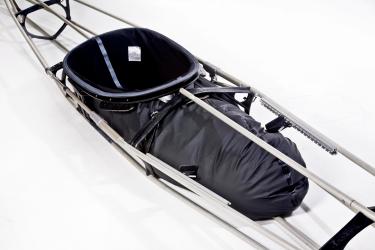
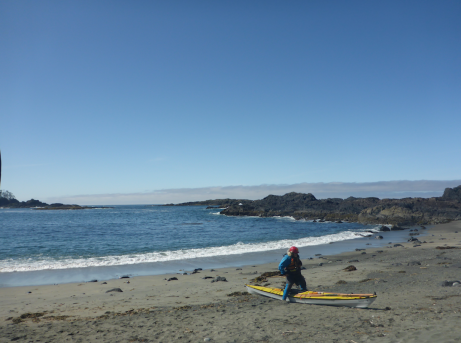

Everyone was eager to get on the water the next day. In the morning, operations manager Jason Guindon demonstrated the newer features, and after lunch, we carried our boats to the beach. The water was calm, with small waves lapping the shore, a perfect opportunity to exchange tips on strokes, rescues, and rolls in skin on frame boats. For me, playing in the surges–rock gardening 101–was a real treat and the most different from my own southeast surf zone. Later, we paddled out beyond the rocks enclosing our cove and saw a massive sea lion guarding his perch.

The first day’s calm gave way to higher winds and slightly higher onshore waves. Nonetheless, the conditions bode well for our trip to Wickaninnish Beach. The Tofino area, I discovered, is Canada’s surf capital, and Wickaninnish Beach promised good clean surf. We paddled out of the cove and headed towards north. We paddled along the coast, that alternated rocky islands and sandy beaches. I didn’t expect to see so many sandy beaches; my image of the Pacific northwest was all rocky beaches. I had thought the Pacific Northwest was all rocky coast; I had no idea I would see so much sand. After about an hour, we reached a rocky island where the group reconvened. We lingered for almost an hour. Some fixed gear while others took the opportunity to rock garden. The island offered several play spots, and we practiced our skills timing the surges along the rocks. I was impressed with the TRAK’s responsiveness. I had never used mine in situations with rocks and fast moving water.
Soon after we left the island, we paddled through a narrow channel made by rocks, and the conditions changed for the worse. The winds grew stronger, and the water rougher. Boats and paddlers dipped in and out of view as we rose and fell with the swells. We paddled on, watching the coast, but staying out far enough to avoid refracting waves. I felt my boat flex with the waves, but it paddled solidly in these force 4 conditions. This was the test, and the boat passed with flying colors. Finally we rounded the headland and surfed in to shore — after all, we had come to surf. It was an exhilarating day and a new challenge for many, but we all agreed that our boats had passed a critical test of seaworthiness.

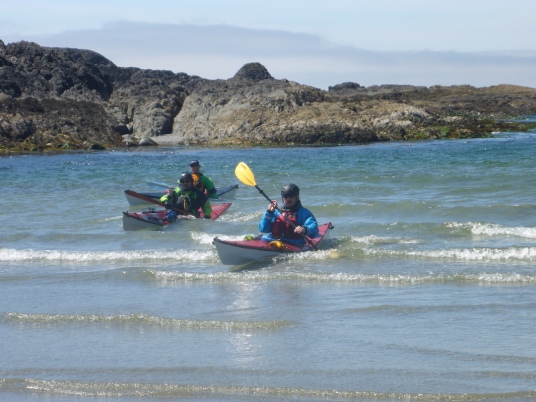
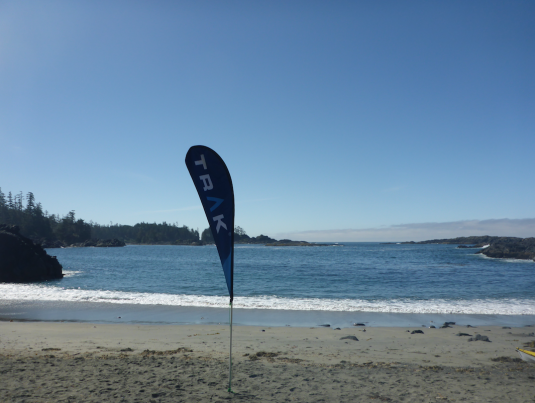

We had so much fun that we returned to Wickaninnish the next day. The conditions had calm considerably, but everyone was happy to have a day just to surf. Fabio and Jamie gave up pointers on surf instruction, but the highlight was playing in the waves. That night we debriefed over fish and chips from a food truck in Tofino and prepared to head home.
On our final morning, we disassembled our boats and offered a final round of feedback on the TRAK. I was sorry to say goodbye to so many new friends, but we are already planning new surf adventures. TRAK’s Kickstarter campaign is well underway, while we eagerly await the unveiling of TRAK 2.0.

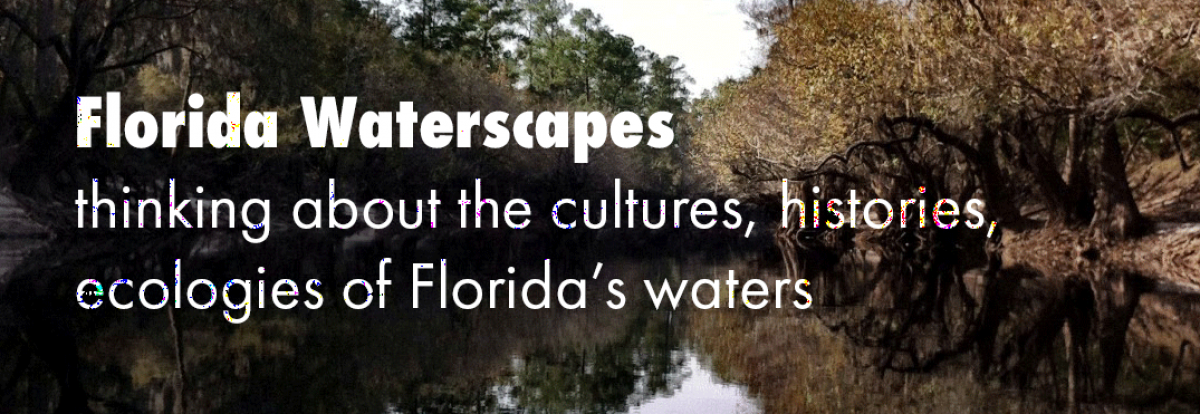


Love it. Fun to play together friend. Thank you for making the effort to come play with us in the PNW. See you in Florida.
nicely done! great to have you there.
Jaime Sharp